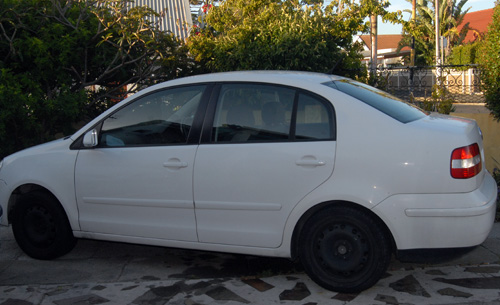ELECTRONIC POWER CONTROL
EPC LIGHT
The EPC fault indicator lamp is very well known among the VAG community, and for those not yet familiar with the EPC light; it's an amber symbol in the instrument panel displaying the uppercase letters EPC, which is the abbreviation for Electronic Power Control. This EPC lamp is often referred to by automotive technicians as K132. EPC is synonymous to Drive-by-Wire which means that the vehicle concerned is fitted with an electrically controlled throttle valve. Restated, the old mechanical throttle cable has now been replaced by an electronic throttle control system. Vag vehicles fitted with Motronic Engine Management version 5.9 ECUs and older, still use a cable operated throttle interfaced with a Throttle Control Module (TCM) and appear to be less susceptible to EPC related problems but not immune. Whereas vag vehicles fitted with Motronic Engine Management version 7.5 coupled to a Drive-by-Wire system appear to be somewhat more susceptible to EPC related problems. This is because ECUs with MEM 7.5 was specifically designed to handle the new torque-oriented EPC function.However, the bright orange EPC fault indicator light has absolutely no effect on the functionality of the Throttle Control System as a whole. When the ignition is initially turned on, it is perfectly normal for the EPC light to come on briefly, then switch off again, if and only if it detects no Throttle Control System DTCs in memory and also determines that the TCS is working OK. This ECU self diagnostic test takes all of 3 seconds. But, should a problem exist, the EPC light will remain on, since it needs to inform you of a DTC stored in memory and that any additional TCS faults won't make it glow any brighter. (NB! There is no other visual way of showing you that there are several EPC errors other than with a scan tool).
DRIVE-BY-WIRE
The Drive-by-Wire system consists of an accelerator pedal module, that houses two accelerator position senders, a throttle control module that also housing two position sensors, a throttlevalve drive servo motor, an EPC light, an ECU and of course the wiring to connect them together.
THROTTLE CONTROL
The two accelerator position senders are a fixed part of the accelerator pedal and in reality are potentiometers. They get their supply voltage from the ECU that is capable of component diagnostics and constantly monitors its inputs. When the ECU detects that one potentiometer signal failed, it sends a DTC to the memory and turns on the EPC light then switches to the second potentiometer. It uses the accelerator pedal input voltage and translates its position into an output voltage that drives the throttle body servo motor that controls the butterfly valve. The two throttle two position sensors, sends feedback to the ECU. Once again theses sensors are potentiometers, also monitored by the ECU and as above, if one potentiometer fails it sends a DTC to memory, turns on the EPC light then switches to the other potentiometer, but not necessarily in that order.WIRING
The CAN Bus wire pair for the Powertrain are Orange/Black and Orange/ Brown but there is also a supply wire (Red) and an earth (Black) wire, to each of the Drive-by-Wire components. Each of these wires have a plug and each of these plugs have at least four wires. Do the math and you could have 8 plugs - 32 male contacts pluging into 32 female contacts. The accelerator pedal potentiometers fault finding procedure. Any of these contacts could be intermittent, all of which will cause the EPC warning light to light up and if any of the Drive-by-Wire components fail will do the same. Considering cars drive on bumpy roads, withstand extremes engine heat and freezing temperatures at night besides rainwater that could find its way into the wiring harness. All of which could contribute to intermittent electrical connections.REPAIRING EPC FAULTS
Repairing EPC faults are easy but needs to be systematic, because everything that can cause the problem needs to be thoroughly investigates and exonerated before the next item is suspect. Before any major or expensive components are replaced, check the wiring. Check the wiring, Check the Wiring. Suspect the potentiometers first since they suffer from wear and tear.POTENTIOMETERS
A potentiometer is essentially a potential divider. Restated, its a three legged device, with a fixed high potential (voltage) and a fixed low potential (voltage) at two of its legs. The third leg outputs a variable potential (voltage) less than the higher potential and more than the lower potential. A potentiometer is normally made of bakelite or fibreglass with a carbon track attached to it. The variable output makes contact with slider that runs on this carbon track. This sider/carbon contact isn't very good because its a sprung loader pressure contact. Besides when the carbon track wears through which is just a matter of time because it is constantly at work when you accelerate. It is going to give you the EPC fault guaranteed.Feel free to upload your VW, SKODA, SEAT & AUDI scans.





+SCHEMATIC.jpg)



